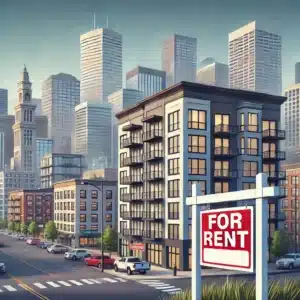
Urban Planning: Drawbacks of The 15-Minute City Model
The 15-minute city promises to put everything a resident needs within a 15-minute walk of their house, eliminating the need for vehicular transportation or long commutes. Though this idea sounds beneficial for residents, the urban planning required to create this design can negatively impact housing prices, availability, and much more.
15-Minute City: Beneficial Idea or Urban Planning Challenge?
The 15-minute city concept is gaining popularity among urban planners. It promises to create walkable communities that put everything a resident needs close to home. It also promises to lower emissions and the overall environmental impact of a community by focusing on eco-friendly transportation or walking. Though this idea comes with a large set of potential drawbacks.
Drawbacks of Urban Planning and Development
As the 15-minute city idea gains traction with urban planning and development teams, some legitimate concerns about how well this concept will work are being raised. For many, the thought of self-contained cities and neighborhoods with short commutes and nearby necessities sounds appealing. However, this concept may not align well with sustainable urban development.
For the 15-minute city concept to work, it must be micromanaged by the government or the urban planners that set it up. The city must have all of the services needed for a comfortable life, and if it doesn’t, then the developers need to step in quickly to create the right services. This does not allow for the natural development of a city. In addition, if one service is missing, the city cannot live up to the expectations, which places a lot of demand on the city’s planners.
Impacts on Real Estate and Housing
The 15-minute city concept could negatively impact the real estate and housing market within these communities. To make the 15-minute city work, the city must have many mixed-use developments. This could disrupt the local building and housing trends and the dynamics of the neighborhoods. Adding the infrastructure to make walkability and accessibility a reality could also impact the design and layout of existing neighborhoods.
This concept can also impact property values. In some areas, rising housing costs could force out lower-income residents, leading to the gentrification of these communities and a limited number of affordable housing options. Urban planners must carefully plan to create equitable housing and protect property values for this model to be sustainable.
Environment and Sustainability
Proponents of the 15-minute city claim that fewer cars on the road will lead to reduced carbon emissions and potentially less traffic congestion. While this could have a positive impact on the local environment, it is important to consider the emissions and closed “work zones” areas during the building process could counter these prospects.
Additionally, public transportation must be added to create a city where cars are not necessary. Eco-friendly transportation options and green infrastructure help the environment in the long term, but in the short term, creating these features does strain it.


Health and Well-Being
Proponents of the 15-minute city promote its positive impact on public health. The ultimate goal is to build a community in which walking and biking are the best ways to get around. However, relying on walkability to access a community’s amenities is not inclusive to those with mobility challenges. These individuals may find it harder to get around without convenient access to transportation.
Many also scrutinize this concept due to its heavy focus on locality, suggesting that it is likely to perpetuate segregation and exacerbate social and economic divides in cities that currently struggle with these issues.
Technology and Innovation
The 15-minute city often mirrors the smart city. These designs will use smart city technology to manage traffic patterns, assess residents’ needs, and plan data-driven improvements. Automation of many city operations is also a critical factor in building 15-minute cities. All of this creates a risk for privacy violations and cyber crimes.
The more connected devices in a city, the more backdoors criminals have to steal private data. Many urban planners lack the proper protocols and IT knowledge to handle the data they collect safely.
Public Policy and Advocacy
Some initial research has shown that the 15-minute city concept may make the problem of urban inequality worse. When urban planners lead the development of a city from a top-down viewpoint, making decisions for its people, the needs and desires of the residents may be overlooked. Equitable access to amenities may not be protected while developing the city’s plan.
Addressing Urban Planning Concerns
The 15-minute city concept is not a perfect solution to urban traffic congestion and greenhouse gas emissions. It has many merits worth exploring, but is accompanied by many potential drawbacks. City planners must thoroughly examine these risks and disadvantages and carefully plan as they strive to embrace sustainability and accessibility in their development efforts.
Share This Article:
Frequently Asked Questions
What is a 15-minute city?
What are the main criticisms of the 15-minute city concept?
How could the 15-minute city concept impact businesses outside of walkable zones?
Subscribe to our email newsletter!
Related Posts
Population growth could stop and metro Denver would still have a housing shortfall
The Denver metro area is experiencing a rise in apartment vacancies, with over 24,000 units
Learn More →2024 Demographia Report Reveals Stark Housing Affordability Challenges
The 2024 edition of the Demographia International Housing Affordability report highlights significant challenges in housing
Learn More →El Futuro es Latino
From the earliest days of European settlement, Latinos have played a crucial role in the
Learn More →Feudal Future Podcast: Addressing the Housing Affordability Crisis and Protecting the Middle Class Dream
Unlock the mystery behind why securing a roof over your head has become an arduous
Learn More →


